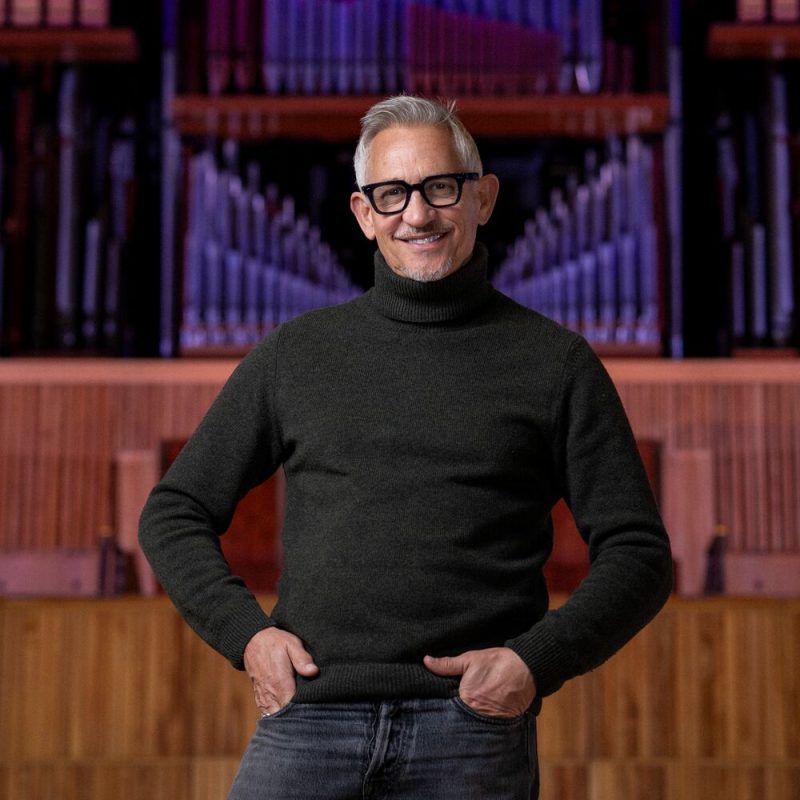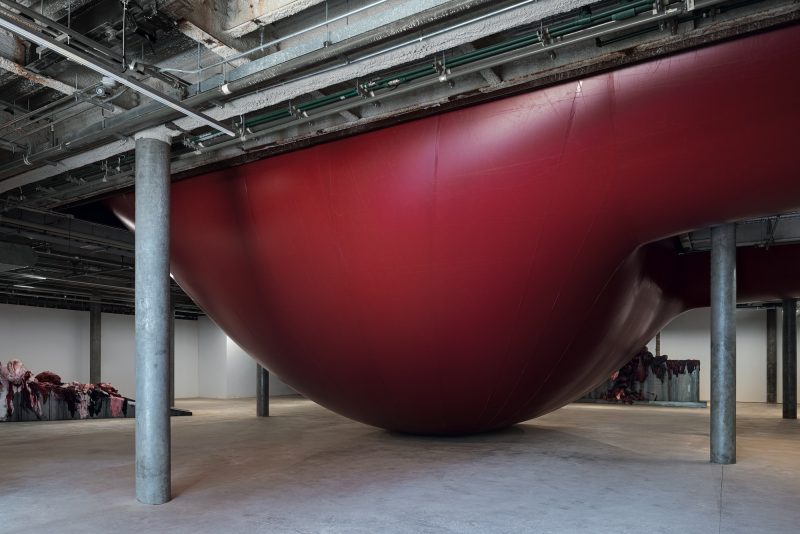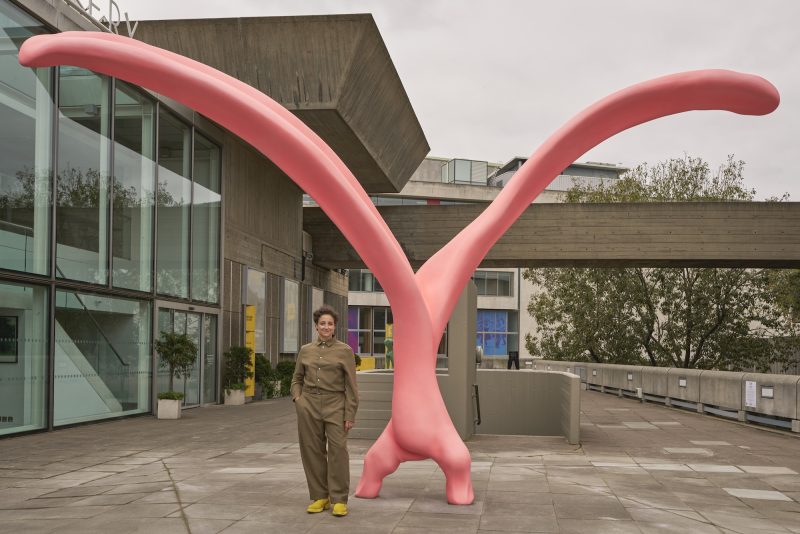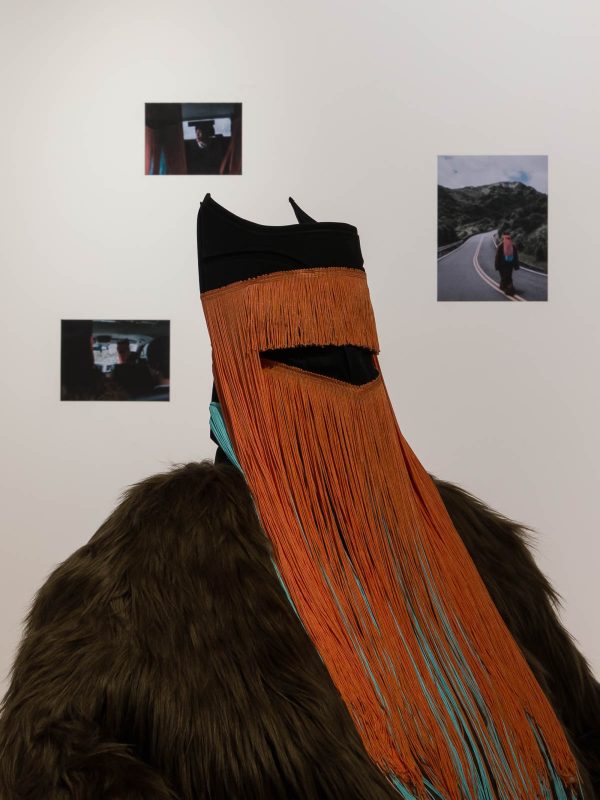
Andreas Gursky 99 Cent II, Diptych, 2001 C-Print Each: 206 x 341 x 6.2 cm © Andreas Gursky/DACS, 2017
Courtesy: Sprüth Magers
London’s Hayward Gallery will stage the first major retrospective in a UK institution of the work of acclaimed German photographer Andreas Gursky (Germany, 1955) in January 2018.
One of the most significant photographers of our time, Gursky is known for his large-scale, often spectacular pictures that portray emblematic sites and scenes of the global economy and contemporary life. The exhibition will feature approximately 60 of the artist’s ground-breaking photographs, from the 1980s through to six new works, which continues to push the boundaries of the medium. Gursky’s art is driven by an interest, and insight, into forms of collective existence and includes depictions of massive man-made structures and huge gatherings of people in nightclubs, factories, arenas, and vast landscapes. As he has stated:
“I only pursue one goal: the encyclopedia of life.”
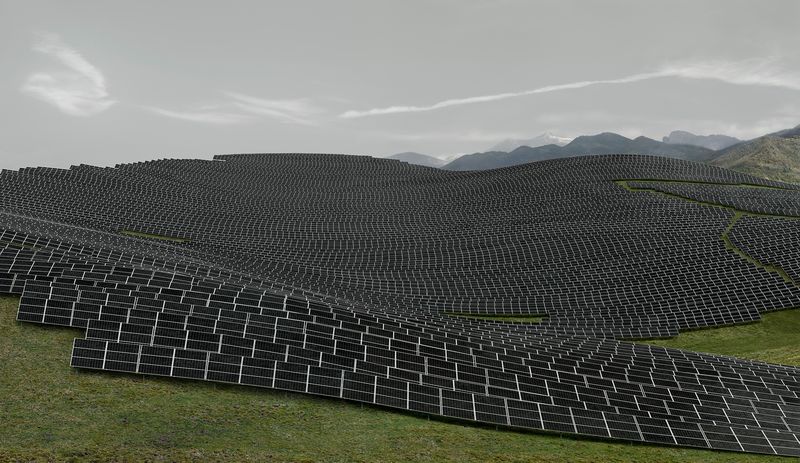
Andreas Gursky Les Mées, 2016 C-Print 220.9 x 367.2 x 6.2 cm © Andreas Gursky/DACS, 2017 Courtesy: Sprüth Magers
Andreas Gursky marks the beginning of the Hayward Gallery’s 50th anniversary year and is the first exhibition to take place in the Gallery following its two-year refurbishment, along with two of Southbank Centre’s other venues, the Queen Elizabeth Hall and Purcell Room. For the first time since the gallery’s original opening, the gallery’s pyramid roof lights will allow natural light into the spaces below.
The exhibition includes some of the artist’s most well known works including Paris, Montparnasse (1993), an immense and iconic photograph showing a seemingly endless block of flats; and Rhine II (1999/2015) a sleek digitally-tweaked vision of the river as a contemporary minimalist symbol. Kamiokande (2007) featuring the vast underground water tank within the Kamioka Nucleon Decay Experiment, Japan; and May Day IV (2000/2014) depicting hundreds of revellers at Germany’s long-running Mayday techno music festival. Often employing a bird’s-eye perspective, these large-format pictures – which rival the scale of monumental paintings – boast an abundance of precisely captured details, all of which are uncannily in focus.
Since the late 1980s, Gursky has depicted a broad spectrum of contemporary life including sites of commerce, industry and tourism across the globe, making pictures that draw attention to our changing relationship with the natural world and chronicle the effects of globalisation on day-to-day life.
From the frenzied stock exchange seen in Chicago Board of Trade III (2009) to the vast distribution centre shown in Amazon (2016), and from the sea of candy-coloured budget items featured in of 99 Cent II, Diptych (2001) to the eerily empty display shelves in Prada II (1997) his images provide a sweeping visual record of our age. Over the past three decades Gursky has increasingly made use of computer-enabled post-production techniques to make photographs whose scale, precision, composition, and complexity are unprecedented and have critically expanded the possibilities of the medium.
In recent years, Gursky’s experiments in manipulating images have led him to create examples of ‘fictional photography,’ extending his implicit questioning of our faith in the factual veracity of images. As he has remarked, today, ‘reality can only be shown by constructing it’. Review (2015) shows a constructed fictional scene in which German Chancellor Angela Merkel and her three predecessors gaze at (and are dwarfed by) Barnett Newman’s Vir Heroicus Sublimis (1950–51).
Following a thread that has developed throughout Gursky’s career, a number of recent pictures share more aesthetically with abstract painting than documentary photography. For example, Untitled XIX (2015), depicts acres of Dutch tulips which, seen from a considerable height, appear as a quasi-abstract composition featuring bands of subtly variegated colour. Straddling the line between abstraction and representation, these works underline the formal concerns that run through all of the artist’s work.
Ralph Rugoff, Hayward Gallery Director, says:
‘I’m thrilled that we will reopen the Hayward Gallery with an exhibition by an artist who has created some of the most visually compelling images of his generation – work that has changed not only the vocabulary of photography, but of picture-making in general. Acutely thoughtful as well as ingeniously composed, Gursky’s photographs provoke us to reflect anew on contemporary social landscapes across the world. A true innovator engaged in thinking about and picturing the times in which we live in, Gursky is the perfect artist for launching the 50th anniversary year of the Hayward.’
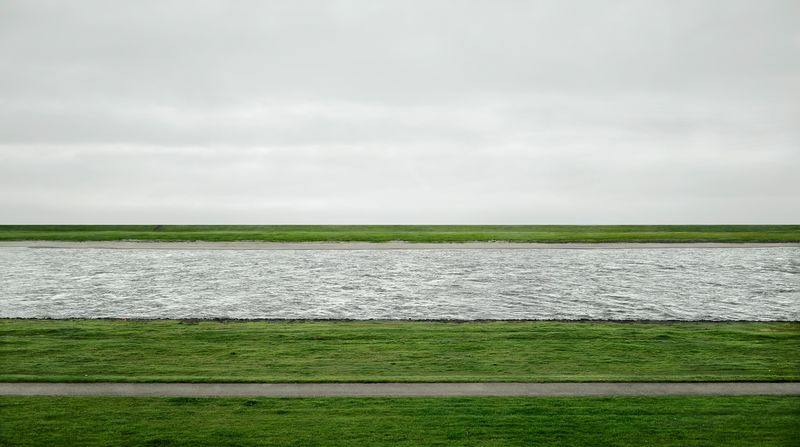
Rhine II, 1999/2015 Inkjet-Print 237.8 x 407.8 x 6.2 cm © Andreas Gursky/DACS, 2017 Courtesy: Sprüth Magers
Andreas Gursky is curated by Hayward Gallery Director Ralph Rugoff in collaboration with the artist.
Andreas Gursky, 25 January – 22 April 2018 Hayward Gallery, Southbank Centre, Belvedere Road, London SE1 8XX www.southbankcentre.co.uk
Andreas Gursky
Born in 1955 in Leipzig, Andreas Gursky studied Visual Communication from 1977 to 1980 at Folkwang University in Essen. He then continued his studies at the Academy of Art in Düsseldorf where, from 1980 until his graduation in 1987, he was a master-class student of Bernd and Hilla Becher. In 2010 Andreas Gursky was appointed professor at the Dusseldorf Academy of Art, teaching ‘Liberal Arts’ (Freie Kunst).
www.andreasgursky.com
Hayward Gallery
Hayward Gallery is a part of Southbank Centre and has a long history of presenting work by the world’s most adventurous and innovative artists including major solo shows by both emerging and established artists and dynamic group exhibitions. They include those by Bridget Riley, Martin Creed, Antony Gormley, Tracey Emin, Andy Warhol, Ed Ruscha, Jeremy Deller, Anish Kapoor, René Magritte, Francis Bacon and David Shrigley, as well as influential group exhibitions such as Africa Remix, Light Show, The Human Factor, Psycho Buildings and most recently The Infinite Mix. Opened by Her Majesty, The Queen in July 1968, the gallery is one of the few remaining buildings of its style. The Brutalist building was designed by a group of young architects, including Dennis Crompton, Warren Chalk and Ron Herron and is named after Sir Isaac Hayward, a former leader of the London County Council. @haywardgallery
Let The Light In
Southbank Centre is carrying out vital refurbishment work on Hayward Gallery, Queen Elizabeth Hall and Purcell Room to make the arts venues fit for future generations. The planned works include replacing Hayward Gallery’s pyramid roof lights to let natural light into the upper galleries, and carefully restoring the original 1960s architecture. Generous support from Arts Council England, Heritage Lottery Fund and Southbank Centre friends, through the Let The Light In campaign, means we have £600,000 of our £25m fundraising target left to raise. Southbank Centre’s Let The Light In campaign launched in September 2015 and offers people the opportunity to support this major repair and refurbishment project by sponsoring seats, dressing rooms and the Hayward Gallery pyramid rooflights. Further information here: southbankcentre.co.uk/letthelightin
